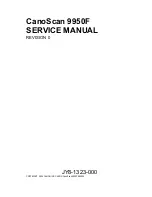
P a g e |
47
7 Volume computations
The FiX1 volume computations all take place onboard the unit. For most users the system is a ‘black-box’ which
automatically produces the required deliverable: a volume or set of volumes.
However, during the FiX1 installation process the volume must be verified and an understanding of the internal
processing and potential limitations of the FiX1 system are necessary to understand and optimise the results.
7.1 Base surface
The base surface defines the extent over which volumetric computations are made. Any data collected beyond the
X and Y coordinates of the base surface is discarded prior to the automated computations.
The base surface effectively acts as a ‘cookie-cutter’ to the scanned data. The outline of the base is projected
upwards and everything between the base surface and scanned top surface is counted as the ‘fill’ volume.
The geo-referencing of the FiX1 with respect to the base surface is crucial. If the scanned data and resulting top
surface are incorrectly positioned or orientated the volume results will be incorrect.
The base surface is contained in a single TIN or DXF file, but may consist of multiple, disconnected surfaces if
required.
7.2 Scan coverage
The scan from the FiX1 must cover the entire area of interest, encompassing all sides of the stockpile(s) which are
to be measured. If the positioning of the FiX1 with respect to the stockpiles means that part of a stockpile is
obscured, then the FiX1 has to make the volume computation using only the data available to it. This means that
smoothing is used to fill any holes join up areas with genuine data. This should be avoided wherever possible by
carefully planning the location at which the FiX1 is mounted and, if necessary, using additional FiX1 units to ensure
complete coverage.
Consider what the laser can and cannot see, and also what it will and will not be able to see when the stockpiles
are at their maximum height.
Some sites may have personnel, vehicles or machinery passing through or stopping during normal operations. The
sequence above may filter out some effects of these features, but ultimately the optimum results will be achieved
by directly scanning the surface of the stockpile. Some suggestions for ensuring this are:
•
schedule scans for times when there will be no other work going on onsite;
•
manually run scans when you can see there are no obstructions;
•
run more regular scans so that any anomaly - like a massively different volume in one scan - will be less
significant & drowned out by more consistent, correct data;
•
run a scan set to 720° horizontal coverage instead of 360°. In this case the unit will scan the area twice (2
x 360°) and all collected data is pulled into the same grid. Since the lowest point measured in each grid cell
is used to create the top surface, the hope is that the obstruction was not be present for one of the sweeps,
and so the surface is measured, and true heights are collected, at least once. This will help if there are
people or vehicles moving around and stopping briefly.
7.3 Processing
The area above the base surface is broken into a grid. The number of grid cells is defined by the
Grid cells
option
Summary of Contents for FiX1
Page 2: ......
















































